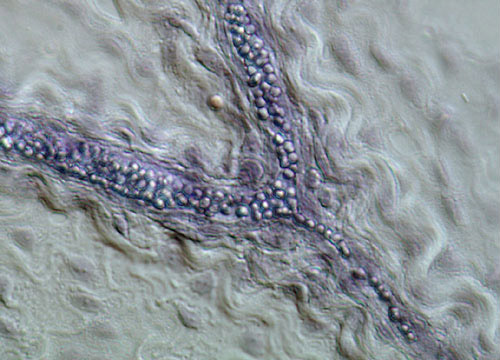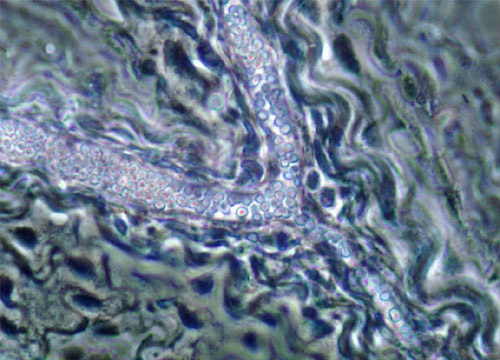Fat-Stained Adipose Tissue
Adipose tissue is a connective tissue that specializes in the synthesis and storage of fat reserves. In mammals, adipose tissue exists in both a brown and a white form, each serving different bodily needs.
 DIC
DIC
 Phase
Phase
Phase
White adipose tissue primarily stores energy in the form of long-chain fatty acids and triglycerides. However, the tissue, which is usually directly below the skin, also acts as a cushion that protects against bodily impact and as insulation to keep the body warm. Depending upon the species and age of an organism, brown adipose, which derives its coloration from densely packed mitochondria, may be found in a variety of locations in the body. The tissue is more metabolically active in hibernating animals and can be activated by cold weather.
DIC
Adipose tissue may atrophy as a result of prolonged periods of undernutrition or, in a localized area, from injury. Atrophy in a specific area is known as lipodystrophy and is sometimes a primary symptom of a disease of unknown origin that mainly affects women. Frequently beginning at a young age, victims of the disease suffer the progressive wasting of adipose tissue. The face, arms, and trunk are the areas most affected as the number of their specialized fat-holding cells drastically diminishes.













